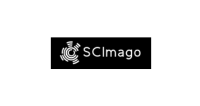PERFORMANCE AND QUANTITATIVE TRAITS OF LAMB CARCASS OF THREE SUBCUTANEOUS FAT THICKNESSES ON THE LOIN
DOI:
https://doi.org/10.5380/avs.v19i2.33351Palavras-chave:
production cost, Dorper, Santa Inês, ultrasoundResumo
The aim of this experiment was to evaluate the productive and economic performance and quantitative traits of crossbreds half Dorper half Santa Inês (½ D-SI) lambs carcasses and purebreds Santa Inês (SI) slaughtered with different subcutaneous fat thicknesses. Thirty-four lambs were used, sixteen were SI and eighteen were ½ D-SI. The lambs were kept confined and received a diet to provide an average daily weight gain of 0.300 kg. Weekly weightings and admeasurements of subcutaneous fat thicknesses through ultrasonography (between the 12ª and 13ª ribs) were made, and the lambs were killed as the predetermined fat thicknesses (2.0; 3.0 and 4.0 mm) were reached. There wasn’t breed effect on the productive performance. Concerning to subcutaneous fat thicknesses, it was noticed an advantage on the animals final weight when these were killed with 4.0 mm. This advantage was of 7.86 and 3.81 kg more compared to those animals that were killed with 2.0 and 3.0 mm respectively. There was differences on food ingestion between all the fat thicknesses. Furthermore, the lambs killed with subcutaneous fat thicknesses of 2.0 and 3.0 mm had a better feed conversion rate (FCR) when compared to the ones killed with 4.0 mm. The economical evaluation expressed in absolute values provided an increased net income as the subcutaneous fat thickness would increase. The commercial and biological returns were affected by fat thicknesses at slaughter and both variables were bigger on thicknesses of 4.0 mm followed by 3.0 and finally 2.0 mm. About meat cuts, the loin yield of crossed animals was superior to Santa Inês ones, possibly due to the genetic makeup in which the crossbred animals have 50% of a genotype skilled for meat production. There wasn’t any breed difference for loin eye area (LEA), Measure C, FTU, and Measure J. However, for all variables, a higher value for animals killed with fat thickness of 4.0 mm was observed, followed by the ones of 3.0 mm and finally 2.0 mm.
Downloads
Publicado
Como Citar
Edição
Seção
Licença
Autores que publicam nesta revista concordam com os seguintes termos:
- Autores mantém os direitos autorais e concedem à revista o direito de primeira publicação, com o trabalho simultaneamente licenciado sob a Creative Commons - Atribuição 4.0 Internacional que permite o compartilhamento do trabalho com reconhecimento da autoria e publicação inicial nesta revista.
- Autores têm autorização para assumir contratos adicionais separadamente, para distribuição não-exclusiva da versão do trabalho publicada nesta revista (ex.: publicar em repositório institucional ou como capítulo de livro), com reconhecimento de autoria e publicação inicial nesta revista.
- Autores têm permissão e são estimulados a publicar e distribuir seu trabalho online (ex.: em repositórios institucionais ou na sua página pessoal) a qualquer ponto antes ou durante o processo editorial, já que isso pode gerar alterações produtivas, bem como aumentar o impacto e a citação do trabalho publicado.














